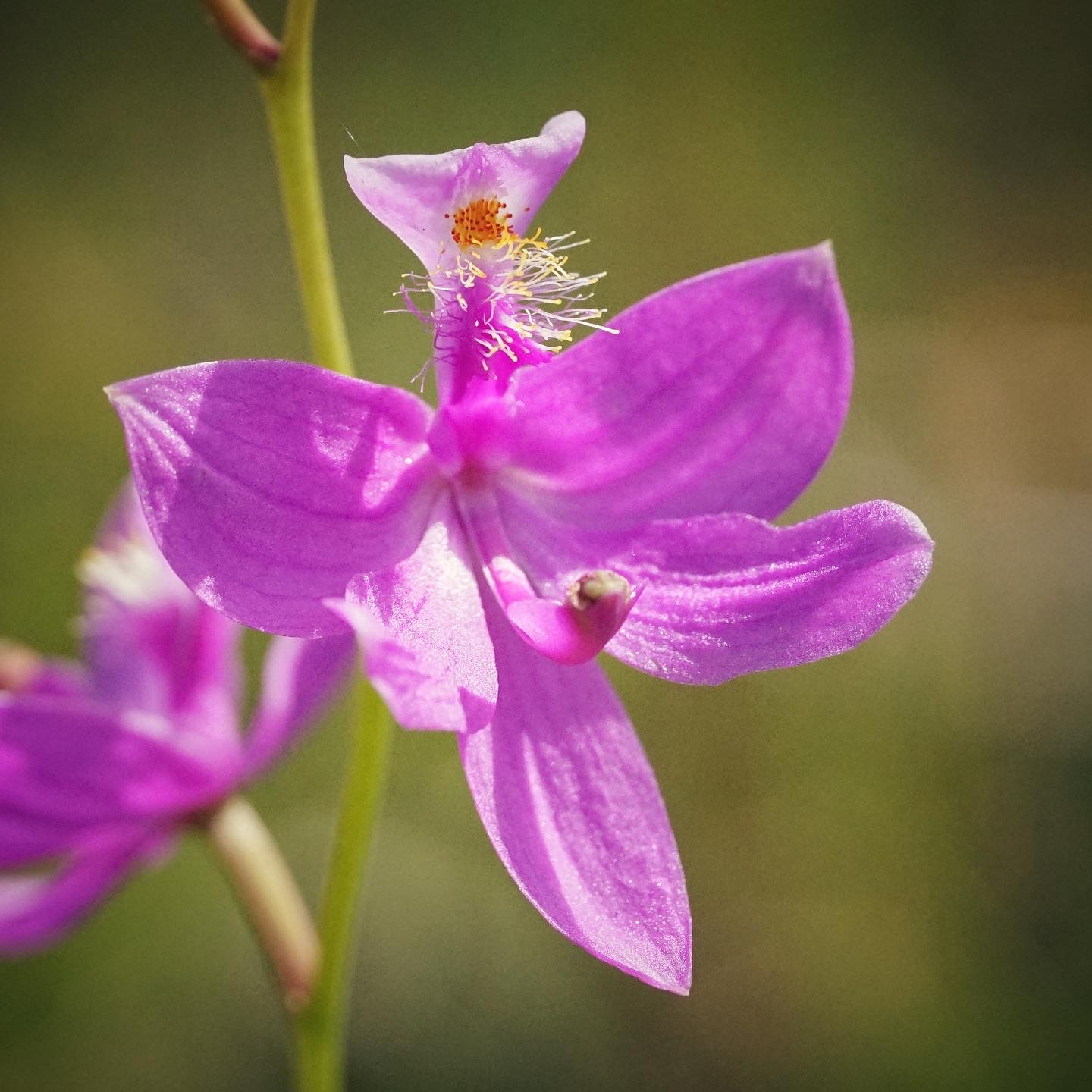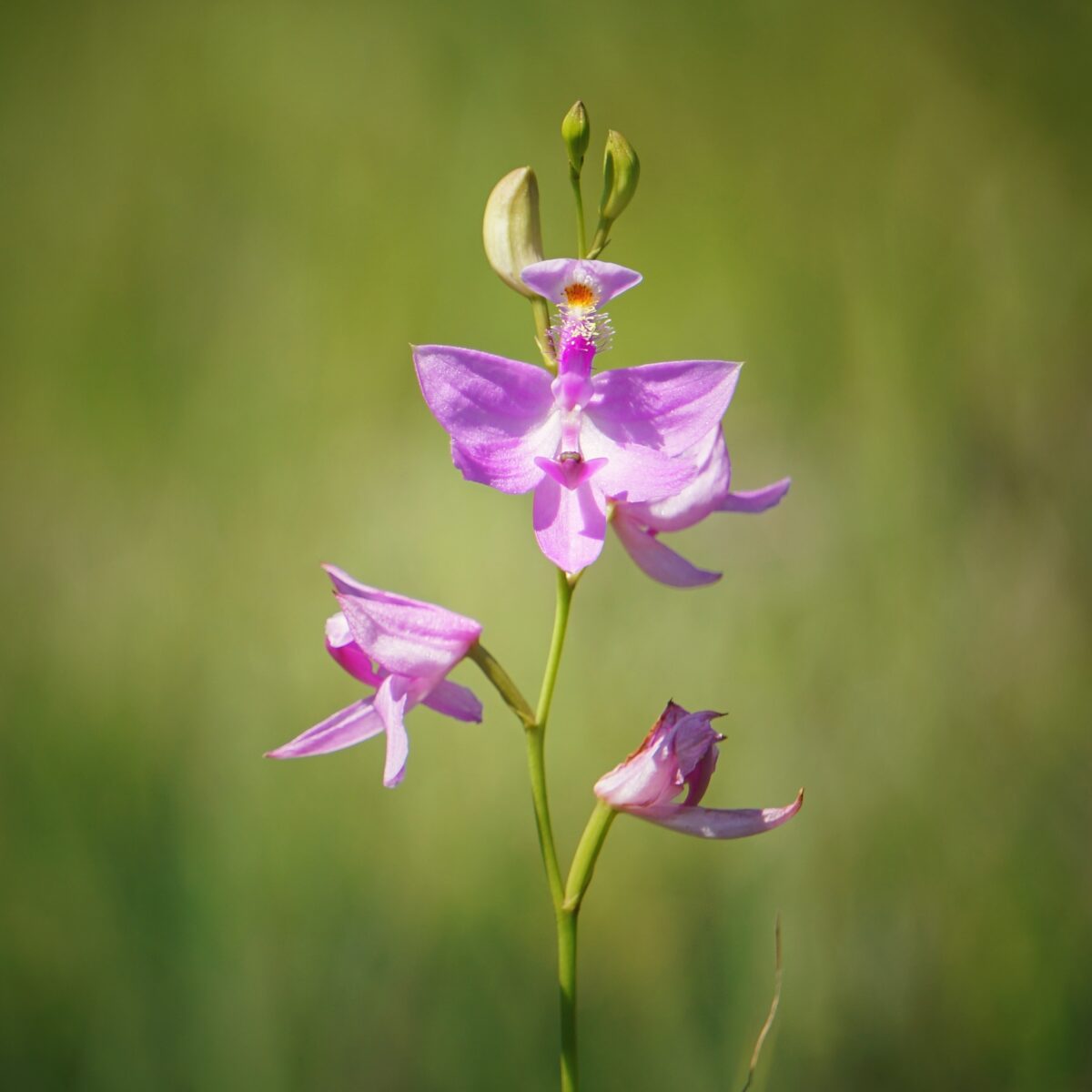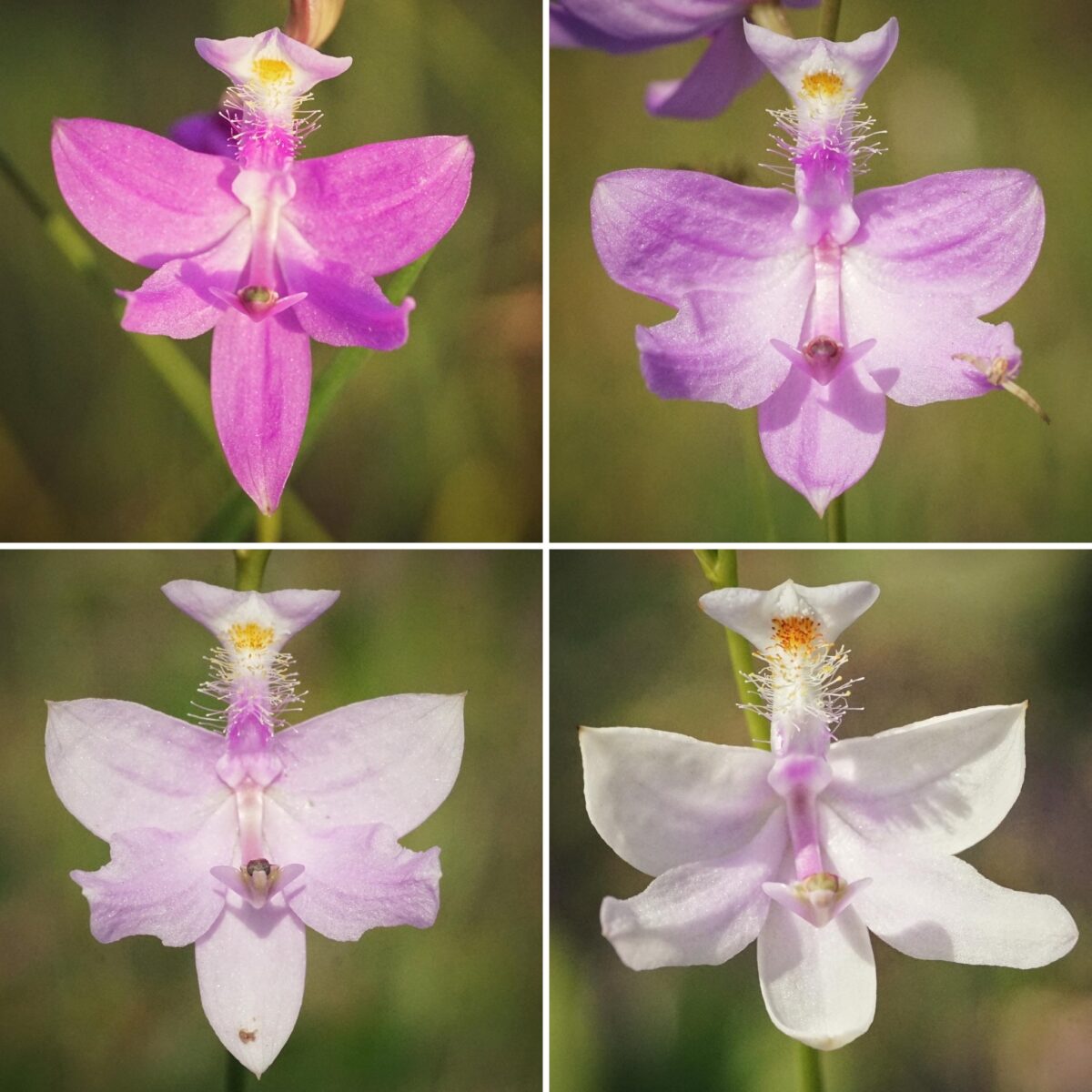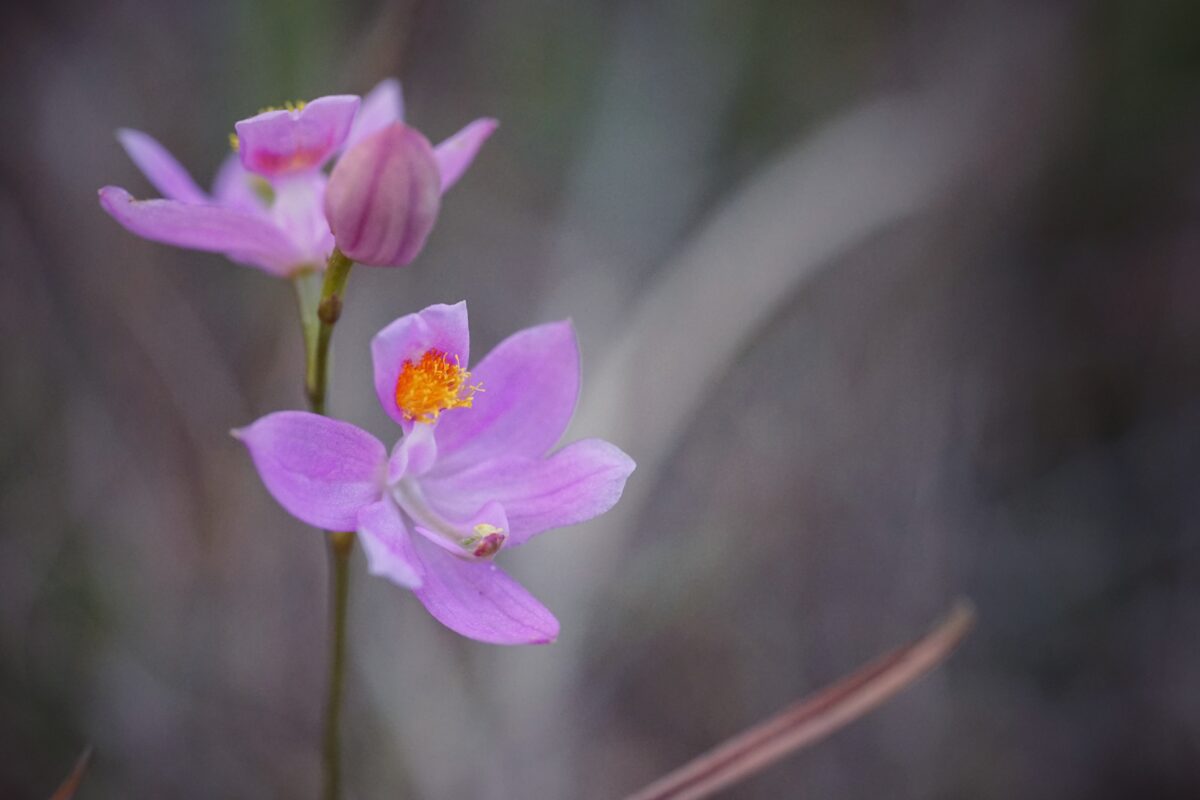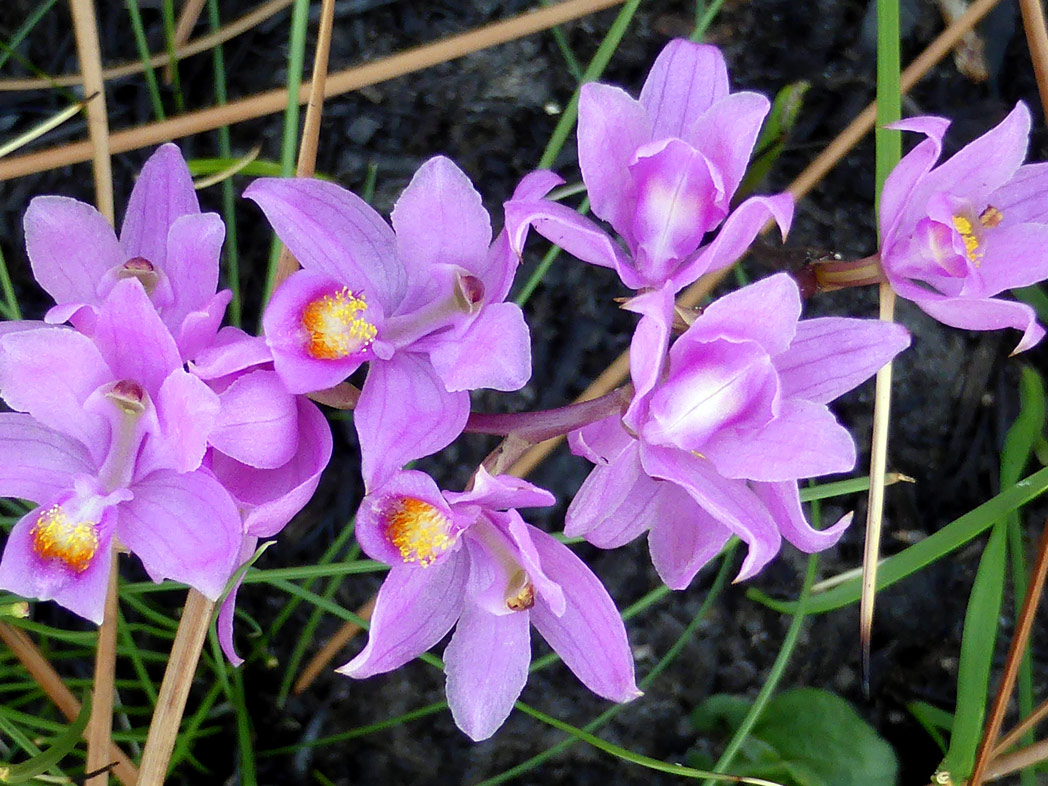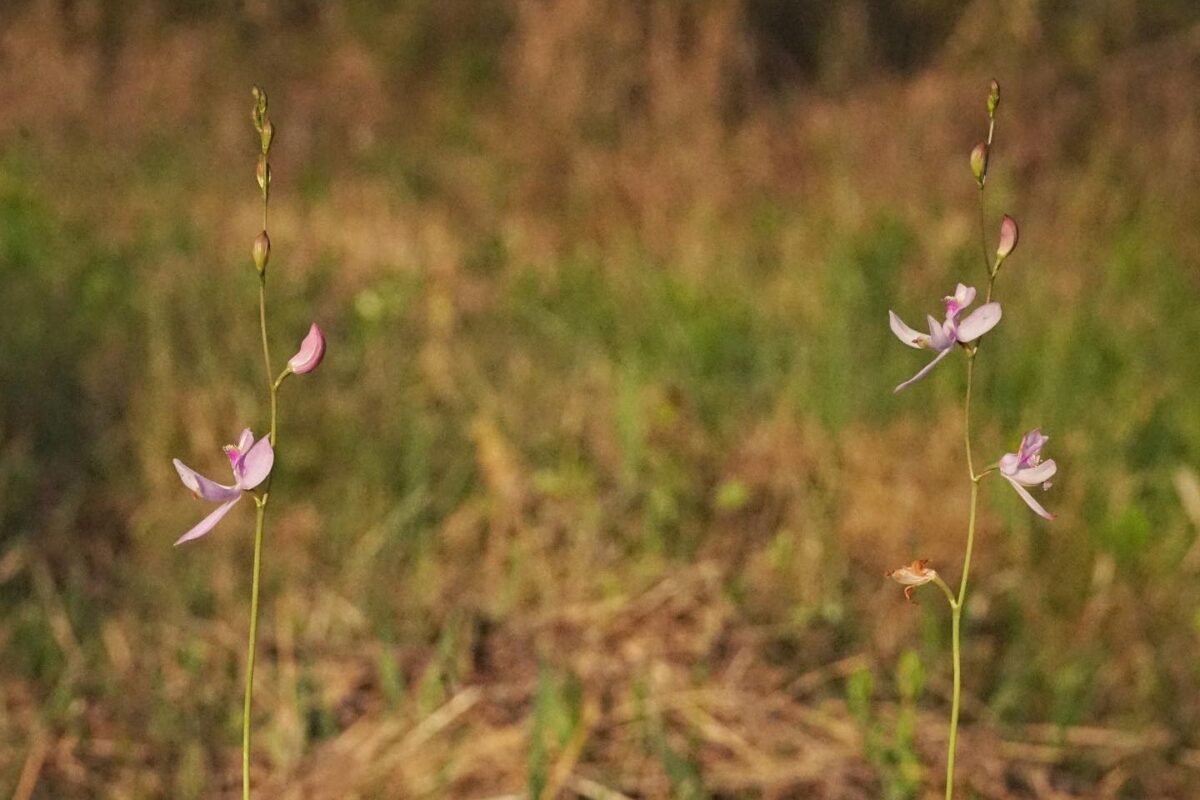Tuberous grasspink
Pictured above: Tuberous grasspink (Calopogon tuberosus) by Emily Bell. Click on terms for botanical definitions. View post as a PDF.
Tuberous grasspink (Calopogon tuberosus) is a showy terrestrial orchid that blooms across Florida each spring. Of the four Calopogon species found in Florida, this one has the widest range, reaching across the eastern US into Canada, west to Texas, and south into the Caribbean. Bumblebees are one of the grasspink’s primary pollinators. The flowers actually deceive bees with a little tuft of orange/yellow hairs on the upper lip that attract the pollinators, but in fact offer no nectar or pollen. When the bee lands, the petal (and the bee) swing down into the flower’s column, trapping the bee, which must crawl across the flower’s reproductive parts in order to free itself. Pollen is then deposited on the bee; if the bee is already carrying pollen, it will make contact with the flower’s stigma and (hopefully) pollinate the flower.
Both the common descriptor tuberous and the species epithet tuberosus refer to its bulb-like corm that resembles a tuber. The common name grasspink refers to the plant’s grass-like lanceolate leaves and its large flowers that range from a deep magenta to light pink to almost completely white. Each stem can have 1-25 blooms, which are non-resupinate, unlike most orchid species. Flowers have three spreading sepals, two lower petals, and an upper lip adorned with yellow to orange hairs. The curved column arches below the upper lip.
There are two varieties of Calopogon tuberosus. Calopogon tuberosus var. tuberosus is the variety found throughout most of this species’ range from Canada and the eastern US into Florida and west to Texas. Calopogon tuberosus var. simpsonii is found only in southernmost Florida, the Bahamas and Cuba. It is distinguished by strongly curled leaves.
Family: Orchidaceae (Orchid family)
Native range: Throughout Florida
To see where natural populations of Tuberous grasspink have been vouchered, visit:
Calopogon tuberosus var. tuberosus
Calopogon tuberosus var. simpsonii
Lifespan: Perennial
Soil: Acidic, sandy moist to wet soil
Exposure: Full sun
Growth habit: Up to 4 feet
Tuberous grasspinks are not commercially available. Visit a natural area to see them.
Learn more about Calopogon tuberosus var. tuberosus and Calopogon tuberosus var. simpsonii from the Institute of Regional Conservation.
For information on other Calopogon species, see these resources:

